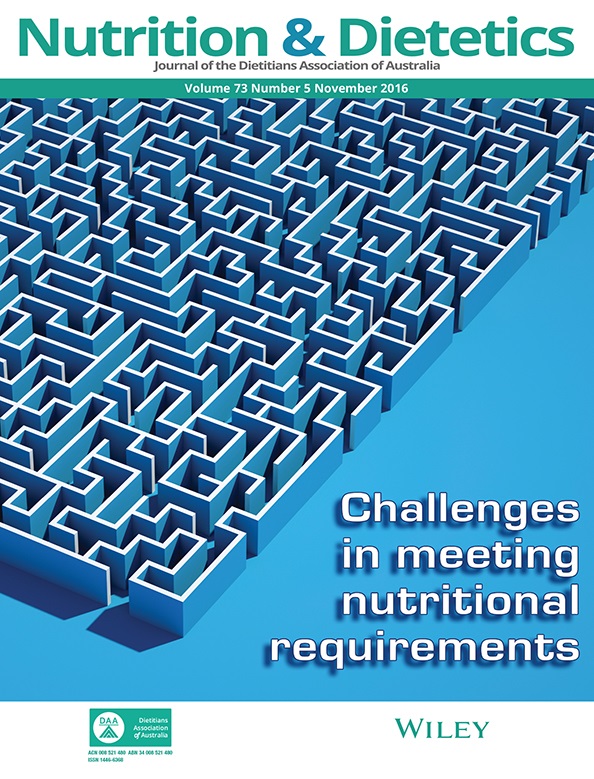Does presentation of smooth pureed meals improve patients consumption in an acute care setting: A pilot study
Abstract
Aim
Malnutrition is a concern across all Australian hospitals and is associated with negative clinical outcomes in up to 60% inpatients, with a further 10% exacerbated by the presence of dysphagia. Providing adequate nutrition for patients requiring a texture-modified diet often results in meals that look and taste less appealing and which are nutritionally diluted. This article aims is to review change in oral intake using food moulding techniques within an acute care institution for patients on Texture C—smooth pureed meals.
Methods
This was a 2 week pilot study. Patients were provided smooth pureed lunch either as non-moulded or a moulded meal. Main meal wastage was weighed and reasons for waste were documented. If patients met the inclusion criteria, a short satisfaction survey was also administered.
Results
Analysis using a chi-squared test comparison saw significance in the proportion of patients increasing oral intake from <1/4 meal eaten to >3/4 meal, when in the moulded form (P = 0.03). Median plate waste was reduced by over 100 g in the treatment group but there was no significant change overall. Limited data for patient satisfaction concluded no significance in meal preference.
Conclusions
The pilot study suggests that using a moulded smooth puree diet can increase mean oral intake and reduce main meal wastage, but a larger sample size is required to demonstrate statistical significance. However, the pilot study effect size (0.55) is large enough to warrant further research interest in this area and results do suggest relevancy in clinical practice for replication.




